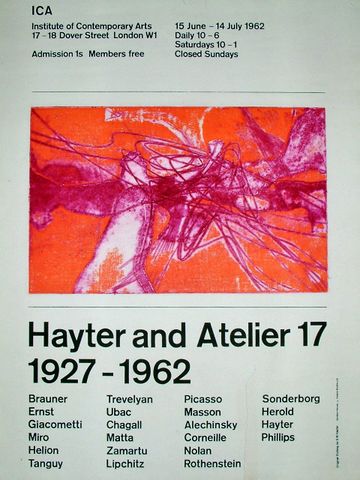ATELIER 17
Atelier 17, an art school and studio that was influential in the teaching and promotion of printmaking was initially opened in rue Moulin Vert, Paris by Stanley William Hayter (1901–1988). Hayter had arrived in Paris in 1926 and enrolled at the Académie Julian and worked there for several months before meeting the engraver, Józef Hecht (1891-1951). Hecht’s technique of engraving directly onto the plate and, intrigued by this technique, Hayter purchased a press and in 1927 his studio at the Villa Chauvelot in rue Moulin Vert was turned into a small workshop. In 1933 Hayter moved to 17 Rue Campagne-Premiere and so began the Atelier 17 proper at 17 Rue Campagne Premičre, the name being derived from the address of a studio (atelier) for printmakers. Although its main emphasis was on printmaking, the studio also provided a centre for the exchange of artistic ideas, and among the notable artists attracted to it included Joan Miró (1893-1983) and Max Ernst (1891-1976), who worked there together in a spirit of collaborative experiment and exploration and Picasso would drop by for technical advice. They were joined by many English artists such as Anthony Gross (1905-1984), Julian Trevelyan (1910-1980) and John Buckland Wright (1897-1954). At the outbreak of the Second World War, Hayter, left Paris, moved to New York City, and reopened his Atelier 17 studio at East 8th Street, where, among the American artists were drawn to it included the likes of Willen de Kooning (1904-1997), Jackson Pollock (1912-1956) and Mark Rothko (1903-1970). Hayter moved his studio back to Paris in 1950 where it continued to operate until his death in 1988 when the studio was renamed Atelier Contrepoint and continued to operate. Suffolk artists who studied at Atelier 17 include Anthony Benjamin, Kate Ponsonby and Valerie Thornton.
Works by This Artist

|
|